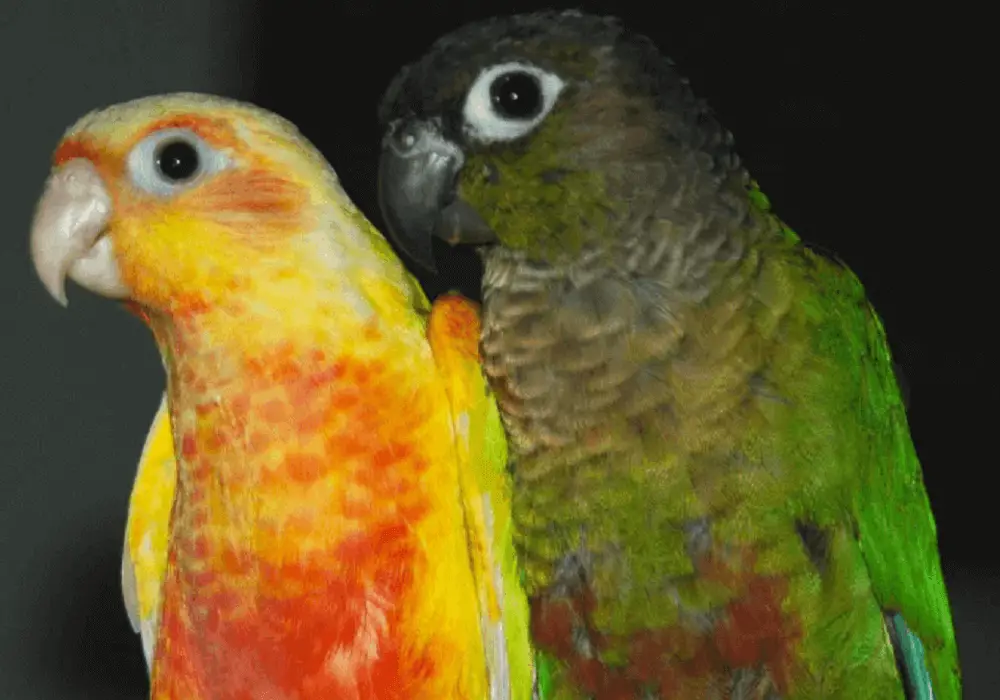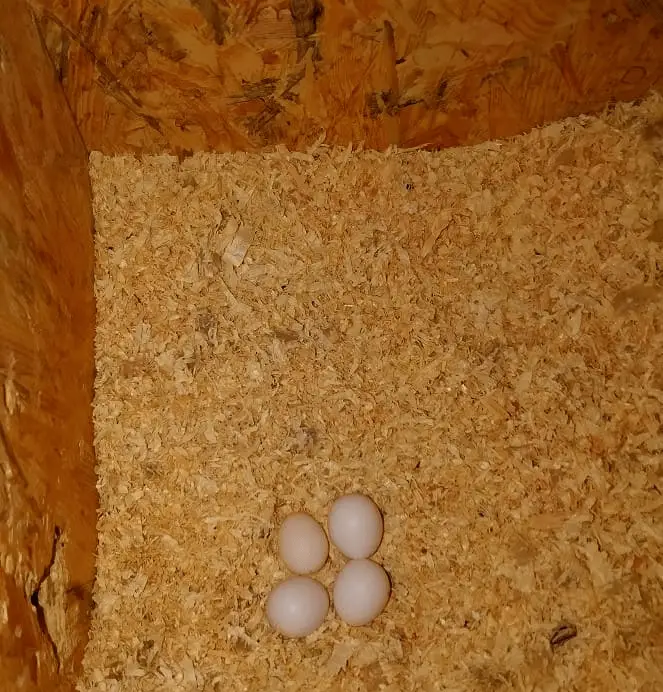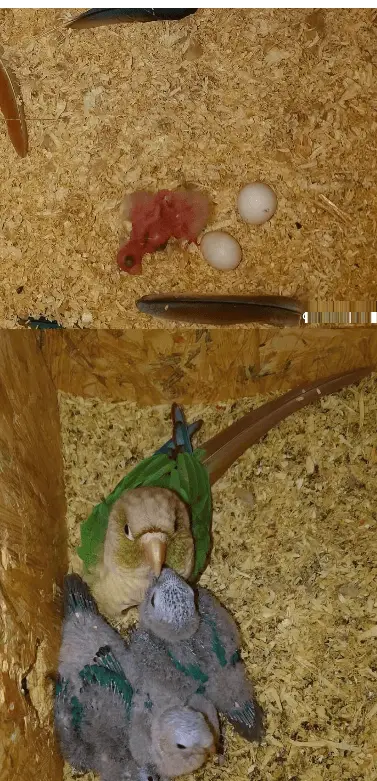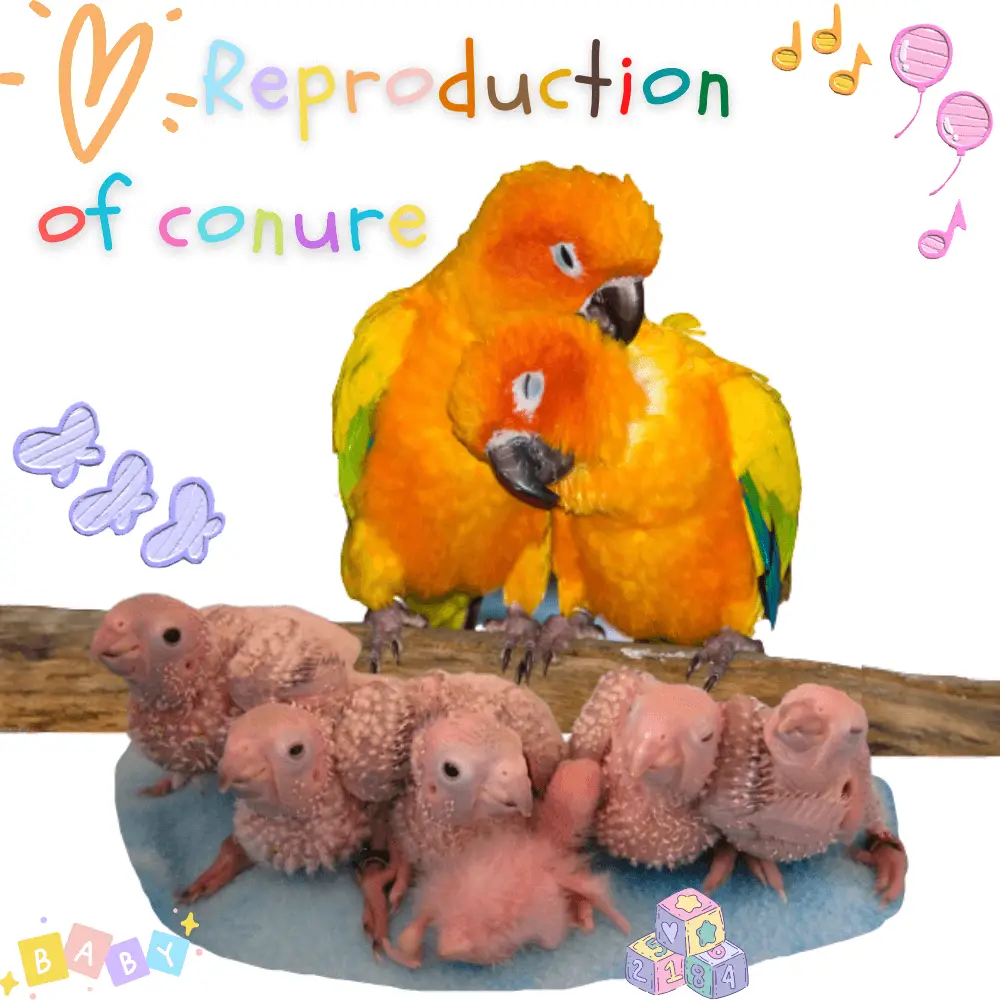Reproduction of conure: The reproduction of pyrrhuras molinae is a subject close to my heart. Because for many years I have been raising this species as a pet bird. Here I am finally approaching the subject in all possible detail.
How do birds reproduce
 Reproduction of conure
Reproduction of conure
To start the reproduction of pyrrhura, it is important to prepare it. This is explained by:
- The age of the pyrrhura pair must be over one year or more. Personally, I wait a year and a half for the female.
- A few weeks before the nest is set up, the food should be richer than usual. I give sprouted seeds 3 times a week, egg food (every other day), and add a few drops of the vitamin to the drinking water. Calcium is present all year round and at will in the form of cuttlefish bone. If by chance your birds do not touch it, you can give it in powder form according to the instructions (for more information click here).
- Two reproductions per year maximum (sense of ethics).
Here we are preparing our breeding couple as high-level athletes. All these precautions are intended to protect the female by reducing the risk of egg sickness. Because the latter often has a fatal outcome.
Engage in the reproduction of pyrrhura
Once the pair are at their peak, I set up the nest. My couple didn’t wait long to visit it. The proof is in the video ?
SOURCE:Jed And Troy’s Fishing / Hughes’ Adventures
Conure Nest:
Reproduction of pyrrhyras molinae
Make a nest
Its dimensions are exactly the same as in the cockatiel. The classic nest measures 20l * 20L * 30H cm. You can find it in stores: Example here.
I admit it’s a bit expensive, so I suggest you make your own nest. For this workshop, I have prepared a tutorial from A to Z to assist you in this achievement.
Video tutorial: making a nest for Conure Parrot
The nest that we are going to make will be 25 cm wide, 25 cm deep, and 35 cm high with these dimensions. This will allow more space inside for the whole family. In addition, it reduces the risk of crushing the less expensive chicks …
HOW TO BUILD A GREEN CHEEK CONURE NEST BOX – how to customize a blank box to use for small parrots
Source:Daybird Aviaries
How to make conure breeding box:
conure breeding box
SOURCE:VJ pets Kpm
During the reproduction of pyrrhura
Green Cheeked Conure Laying:
Reproduction of pyrrhura
Reproduction usually starts from the first laying. I say that because many are surprised to have eggs when they have never seen the pair reproduce !!!
I assure you, there is no mystery. Just like in Celestial Touis or Catherine Parakeets, Pyrhuras can breed (in secret) in the nest.
The female lays between 5 and 6 eggs on average with a spacing of 48 hours between each egg. My couple gave me 4 of which 3 were fruitful and 1 clear. You can candle the eggs from the 6th day after brooding for each egg.
Reproduction of conure/ conure breeding season

Green Cheek Conure Brooding:
Brooding is the business of the female, it is she who mainly manages the eggs. The male also has an important role, since it is he who feeds his female during this period. During the night, he does not hesitate to sleep in the nest to brood with his female. During the day, the female goes out from time to time to do these needs, to drink a little, and to nibble a few seeds in a hurry …
The incubation period is 23 days. But since the female-only broods assiduously from the 2nd egg (see the 3rd), you have to add a day or two of uncertainties.
As soon as the first baby points its beak, small “cui-cui” to melt the heart pierce the walls of the nest. So you will surely hear it.
At home, the first baby hatched on the 24th day. The next day it was the 2nd baby’s turn and the 3rd hatched 2 days later. This means a gap of 4 days between the 1st and the 3rd. The 4th egg was clear but I left it so that the female does not leave the nest too early and at the same time, to serve as a support for the babies …
Green Cheek Conure Feeding babies:
Parents’ activities do not change. The female continues to incubate the babies and the male eats a lot to feed his female and also participates in the feeding of the babies.
You have to wait ten days to see the female come out more often. This is quite normal because the young people are taller and they ask for more food.
However, the male continues to feed his female and I have even heard the latter make little sounds to claim her coming. I don’t know if it’s a marital argument, but something that made me laugh. This is detail ?
Green cheek conure nesting
Conure Nest control and parent behavior: Baby pyrrhura molinae in the nest
To be honest, the first few days I didn’t want to disturb the parents.
Fortunately, I heard the “cui-cui” to reassure me. But once all the eggs hatched, you still had to visit the nest.
I managed to look in and spot the shrimp. But I had no way to touch them. The mother took care of the grain and brooded these young people well. Good, that reassured me and then it was not the time for banding.
However, my relationship has not changed their behavior towards me. They are an EPP couple that I formed when they were still young.
Over time we have succeeded in establishing a relationship of trust. They are not manipulable but they seek contact and are not afraid of me. In summary, I did not see any aggression.
Ditto for my other Pyrrhula EAM pair, their behavior remained the same during breeding. The couple stayed close to me.
However, there have been reports of aggression and behavior change in other people. I will stop there because this is not our topic.
Banding of baby pyrrhura:

Reproduction of conure
This point is important for several reasons:
- The first is to have officially closed rings. Even if you have only one breeding pair, you have a duty to ring the young and therefore identify them.
- The second thing is the timing of the banding. This question always comes up on the table. Know that there is not a specific date to remember. It all depends on the number of young in the brood and the quality of feeding. This will influence the growth of babies and therefore the time of banding. So my advice to you is to start a banding test on day 8, which will give you an idea. But the average day to ring young pyrrhura is between day 10 and day 12 as it was for me (see Instagram video). But it can go up to the 14th day … In short, it is better to band rather and start over until the ring holds than to miss it.
How to put a ring on your conure parrot leg (parrot banding)
SOURCE:scmagen
The evolution of baby pyrrhura in the nest
I will come back to this part in more detail in a future article. But you can watch the video below that traces the evolution of the babies in the nest.
Reproduction of conure
SOURCE:Rose C
Before ending, I would just like to point out that the young start to emerge from the nest from the 5th week (depending on the young).
In some cases, the young will have difficulty returning to the nest (not enough strength to climb or they cannot find it).
It is therefore important to put perches at the level of the flight hole of the nest and not to hesitate to put them back in the nest if the situation requires it.
Conure breeding season
For me, the Reproduction of conure pyrrhuras molinae brings together points in common with the reproduction of cockatiels, catherine parakeets, and celestial touis.
These accumulated experiences have allowed me to have a pleasant experience with the pyrrhura.
I shared everything on my Facebook page, and on Instagram and it’s not over yet. So, don’t hesitate to join us on other adventures.
If you are interested in pyrrhura mutations, here is our article series on the subject:
Current changes: full article to read here.
Misty: full article to read here.
Violet: full article to read here.
Dilute (Mooncheek, Suncheek, Mint, violet): full article to read here.
Lutino: full article to read here.

